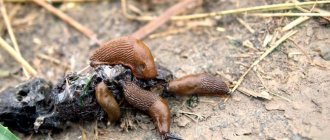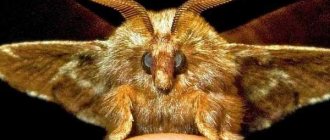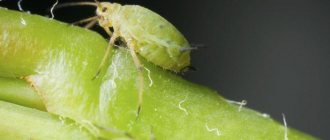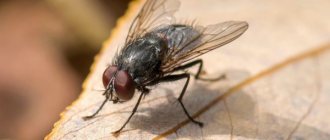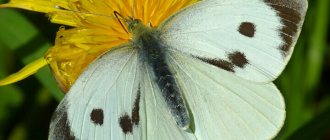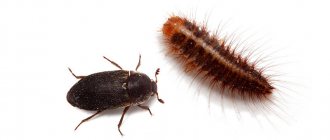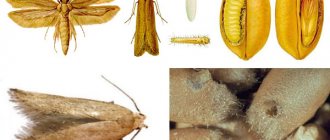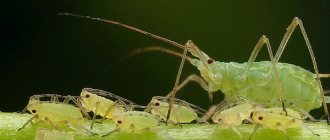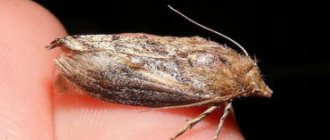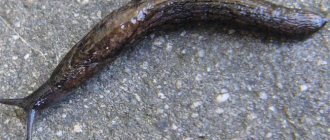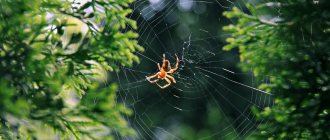The turnip white or turnip (Pieris rapae) is a common insect that causes great nuisance to gardeners, especially in America. Often this butterfly is not seen as a threat, allowing it to reproduce freely. But when the reptile population increases, the fight against it becomes noticeably more difficult, and the damage caused suddenly becomes serious and noticeable.
Turnip white (turnip): butterfly, appearance
Repnitsa: appearance and features
This pest is often confused with other members of its family, since they all have similar body structure and coloring. The butterfly also has a high prevalence, which is justified by its unpretentiousness to living conditions.
External characteristics
The body length of adult individuals is 2-2.6 cm. The length of the front wing is 2.2-3 cm. The wingspan is 4-5 cm. It has a developed proboscis and short club-shaped antennae. The wings are wide, with dark pollination at the base. Their color is predominantly white, but the shade may vary slightly depending on the age of the individual and living conditions. The front wings have a black or dark gray border. The body most often has a gray, less often black or slightly brownish tint.
Sexual dimorphism is manifested in the size and number of dark spots on the wings. Females are larger and have two dark gray or black spots, often with ragged edges. Males have a smaller spot with clear boundaries.
How does turnip differ from cabbage and rutabaga?
Repnitsa has similar external characteristics to other members of the family. It is often confused with cabbage and rutabaga. The first has a list of differences:
- more saturated color;
- a large area of black border on the front wings.
- slightly larger than the turnip white (approximately 0.3 cm);
Rutabaga often has a black pattern running along the vein line of the wings. It is also distinguished by a green coating, which can be seen on the underside of the hind wings.
Ecology DIRECTORY
Turnip white. The butterfly is similar to the cabbage white, but smaller in size. Wingspan 35-45 mm. The apical spot on the fore wings is small, dark gray or brown; in addition, the female has 2 more dark spots, the male has 1. The caterpillars are 20-24 mm long, monochromatic, velvety green, with a yellow stripe along the back. [...]
Whitefish - cabbage (Pieris brassicae L.) and turnip (Pieris rapae L.). Distributed everywhere, with the exception of the Far North, the Urals, Siberia and the Far East. It is most harmful in the northwestern and western regions of the European part of the USSR. They damage cabbage, radishes and other cruciferous crops.[...]
Turnip white caterpillars thus destroy 40% of the eggs and young larvae of A. glomeratus L. that enter their body (according to T. S. Moiseeva, 1957 - from 25 to 38%, and the degree of immunity of caterpillars increases with age) and 27% - A. rapae Meyer. G. A. Viktorov (1958) established the formation of capsules from such cells around the eggs and young larvae of the ichneumon wasp Limneria fuscicollis Thoms, in the body of the caterpillars of the bean moth (Etiella zinkenella Tr.), and in Kamyshin in 1953 in the caterpillars of the second generation the mortality rate of the ichneumon was 29.4%.[...]
Turnip white caterpillars feed on the leaves of cruciferous plants, eating them. In summer, they often bore between the leaves covering the head of cabbage, causing them to rot.[...]
The biological development cycle of turnip white is similar to the development cycle of cabbage. The difference is that female turnip whites lay eggs on plant leaves not in groups, but one at a time. [...]
Pupae overwinter on plant debris, house walls, and fences. The flight of turnip white butterflies begins 1-1.5 weeks earlier than that of the cabbage white butterfly. Females lay eggs one at a time on the underside and top of the leaves. After 7-11 days (the sum of effective temperatures for egg development is 40° with the development threshold being 6.7°), caterpillars emerge from the eggs. They feed on leaves for about 20 days. First, small irregularly shaped holes are made in them, and then the entire leaf blade is destroyed, including the thick veins. When a head of cabbage is formed, the caterpillars can bite into it, making passages. In the summer generation, pupation occurs mainly on food plants. Gives 1 - 3 or more generations. The largest number of caterpillars is observed in August.[...]
It is recommended for spraying cabbage against a complex of leaf-eating pests (cabbage and turnip moths, moths, cabbage cutworms and moths) at a rate of 10-40 g per 10 liters of water. The optimal period of treatment against cabbage whiteweed, moths and moths is when caterpillars of 1–4 instars appear and against cabbage cutworm when caterpillars of 1–3 instars appear. Against each generation of the pest, 1-2 sprayings are carried out every 6-7 days.[...]
Designed to control pests of vegetable crops and fruit and berry plantings: cabbage and turnip moths, cabbage moths, cabbage cutworms, codling moths, hawthorns, ringed and gypsy moths.[...]
Almost all tested organophosphate preparations turned out to be highly effective against cabbage moths, cabbage whites and turnip whites (Table 1).[...]
Larkspur is high. Used for spraying during the growing season of plants against pests of vegetable (cabbage moth, cabbage and turnip moths) and fruit crops (sawfly larvae, open-living beetles, apple copperhead, ringed silkworm caterpillars, hawthorn, goldentail), as well as against mites, fusarium, root rot .[…]
During the breeding season, most insects exhibit an instinct to provide future offspring with food. Females lay eggs or give birth to larvae in places where the larvae are provided with food. Cabbage moth (Piute Na maculipennis Curt.), turnip white moth (Pieris rapae L.) or cabbage white moth (P. brassicae L.) lay eggs only on cruciferous plants; the blowfly (Calliphora erythrocephala Mg.) lays eggs only on meat and animal corpses, etc. The choice of place for oviposition in most cases is determined by chemotaxis. [...]
Trichogramma is an insect barely visible to the naked eye. Trichogramma lays its eggs inside the eggs of more than 80 species of pests, among which there are such dangerous ones as the codling moth, cabbage moths and moths, cabbage and turnip moths, etc. The Trichogramma larva feeds on the contents of the egg, develops in it and emerges from it to pupate. . At a temperature of 20-25 ° C, Trichogramma develops in 12-15 days. It overwinters in the larval stage in pest eggs. Adult insects feed on nectar.[...]
Among insects, there are also species that under normal conditions do not form any clusters and lead a completely solitary lifestyle; they also disperse eggs singly, for example, polyphagous pests of field and garden crops - the winter cutworm (Agrotis segetum Schiff.) and the screech cutworm (A , exclamatio-nis L.) or (in usual cases) a pest of cabbage and other cruciferous crops - turnip white (Pie is rapac L.). These insects can still concentrate in certain places due to the presence only in these places of suitable environmental conditions and especially plants or animals that serve as food for them. With a uniform distribution of the ecological conditions necessary for them among the biotope, they settle over its area in more or less uniform quantities.[...]
Entobacterin is a dry powder of light gray color. 1 g of the drug contains 30 billion bacterial spores and the same number of crystals of exotoxins, waste products of bacteria. Recommended for spraying vegetable and fruit crops against caterpillars of leaf-eating insects (except cutworms and moths). On cabbage, this drug is used against cabbage moth caterpillars, turnip and cabbage moths of the first - third instars with a consumption rate of 20-60 g per 10 liters of water. On fruit plants - against apple and fruit moth caterpillars, silkworms, moths, lacewings, hawthorns with a consumption rate of 60-100 g per 10 liters of water. No more than two treatments of the same crop per season are allowed.[...]
Entobacterin is used in the form of an aqueous suspension, which is prepared one to two hours before spraying. The insect, feeding on plants treated with drugs, swallows bacterial spores and endotoxin crystals along with the food, after which it becomes paralyzed. The death of the insect usually occurs after 5-10 days. Entobacteria are used to combat caterpillars of cabbage and turnip moths, cabbage moths, and cabbage moths. The drug destroys these pests almost completely. [...]
For vegetable and fruit crops, VIZR recommends a set of biological control techniques that combine the use of entomophages and microorganisms against different or the same pests on the same crop.[...]
Available in the form of a dry powder with a titer of 30 billion viable spores per 1 g of the drug. Shelf life: 1 year at temperatures from 35 to -30°C in rooms protected from precipitation. It can also be produced in the form of a paste with a titer of 20 billion spores per 1 g of the drug with a shelf life of 1.5 years at a temperature of 30 to -20°C. These preparative forms are recommended for the control of caterpillars of younger instars of cabbage and turnip moths, cabbage moths, moths on vegetable crops at a consumption rate of 2-3 kg/ha and with caterpillars of I-III instars of apple and fruit moths, leaf rollers and silkworms, moths on fruit trees at a consumption rate of 2.5-5 kg/ha. Against each generation of pests, it is best to carry out 1-2 treatments every 7-8 days.[...]
Some insects develop immunity to their parasites. Van Burgst (1919) notes that in many cases equestrians cannot infect their host. N. F. Meyer (1926) discovered that some cabbage moth caterpillars (Piute Na tasi-tipennis Curt.) have blood cells that are usually mistaken for phagocytes (Meyer, 1925; Bose, 1936) or for undifferentiated mesenchymal elements (Larchenko, 1933 ), surround the eggs and larvae of the Angitia rapae Meyer., as well as in some turnip white caterpillars (Pieris rapae L.), they surround the eggs and larvae of the Angitia rapae Meyer, and Apanteles glomeratus L., as a result of which the parasites die, and caterpillars complete development.[...]
Insects from the orders Hymenoptera, Diptera and beetles are insensitive to the action of these bacteria. To the most harmful insects susceptible to the action of drugs you. [...]
Pests and diseases of vegetable crops. Harm l and. Vegetable crops are damaged by a large number of myogivore pests - rodents, wireworms, cutworms, meadow moths, etc. For a number of myogivore pests, vegetable crops have become their reserve sites. At the same time, certain types of vegetable crops also have specific specialized pests. Their significance is associated with the distribution of the damaged plant in vegetable crops. In this regard, the largest number of specialized pests is noted on cabbage. These include cruciferous flea beetles, cabbage flies, cabbage moths, cabbage and turnip whites, cabbage aphids, cabbage stem worms, and rapeseed moths. For all these pests, detailed reviews are compiled by region, including the phenology of each generation; occupied areas in comparison with those surveyed (percentage); percentage of infested plants and pest density (average, maximum); damage to plants (in points); state of the population before leaving for the winter; the scope of preventive and protective measures taken and their effectiveness. For most harmful species, factors that promote or inhibit reproduction and survival are known. Taking this into account, the reasons for the observed spread of harmful species in each region are analyzed, the level of expected spread of the species in the next year is determined, and the necessary preventive and protective measures are taken.[...]
Habitat of the turnip white
The original habitat is Europe. But now the pest is extremely common in many countries of the world. The reason for this expansion of the habitat was trade. At the moment, the species is most often found in the following places:
- Western Europe;
- North America;
- Central Asia (except the extreme south);
- North Africa;
- Australia;
- Caucasus and Transcaucasia;
- Kazakhstan;
- Ukraine;
- Belarus;
- Moldova.
In Russia, the reptile lives all the way to the Far East, the south of Western and Eastern Siberia. The pest is resistant to weather changes and tolerates wintering well. The insect is believed to cause the most significant damage in North America. In Europe, despite favorable conditions, the turnip whiteweed destroys noticeably fewer plants.
Repnitsa: lifestyle
From 2 to 3 generations develop per year. In the northern regions, only 1 generation can develop, which can be seen from the end of June to the end of July. In the most comfortable conditions, the number of generations can reach 5. In this case, butterflies can be seen from April to October. The last generation is always incomplete. Different generations may have minor external differences.
Reproduction and life cycle
The insect quickly finds a partner and mates with him. The initiator can be either a male or a female. After fertilization, the female searches for the most suitable place to lay eggs. The average fecundity is 150 eggs, but it has been observed that the number can reach 500.
Eggs are laid singly. The female glues them to the leaves of plants, most often on the underside. Egg development takes 5-11 days and is highly dependent on temperature and humidity. Although the eggs are laid separately, they can be found in close proximity to each other. Thus, there can be a huge number of eggs on one leaf.
The eggs are pear-shaped with pronounced ribs. The color is always yellow. Color saturation changes over time. As the larva develops, the egg becomes more transparent and may slightly change shape.
Newborn larvae are evenly distributed over the leaves of the infected plant. Activity occurs mainly at night. The caterpillars are located on the top of the leaf. The insect at this stage is quite slow. Therefore, it relies on its color to help it blend into its surroundings. If the larva has been spotted, it raises the front of its body, exposing its underside to its attacker. There is a bright pattern typical of poisonous animals. In extreme cases, the caterpillar may squirt a repellent-type caustic liquid. Development takes from 20 to 30 days. There are 5 instars of the larval stage.
What does the turnip white caterpillar (larva) look like?
Turnip white (turnip): caterpillar
The body length of the larva varies between 3-4 cm, which depends on the number of molts. At the larval stage, the insect has 3 pairs of thoracic and 5 pairs of abdominal limbs. The turnip larva has the following distinctive features:
- main color – bright green;
- on the back there is an inconspicuous longitudinal yellow stripe, which may be interrupted and have uneven edges;
- there are short bright yellow stripes on both sides;
- the whole body is covered with long light hairs.
The segmentation of the larva is not very pronounced. Small black dots can be seen all over the body.
The pupa is attached to plant stems, bark or wood, less often on other solid objects. At this stage, some generations of reptiles overwinter. The development of a non-overwintering pupa takes 8-15 days.
The pupa is yellow-green in color. There may be a gray tint, black dots and longitudinal yellow stripes. There are large lateral and dorsal spines. The brightness of the color directly depends on the material to which the pupa is attached.
Diet
The basis of nutrition for the larvae are plants belonging to the cruciferous (cabbage) family. It should be taken into account that newborn larvae hide on the underside of the leaves. Most often, caterpillars damage young leaves: first they skeletonize them, and then gnaw through holes and gnaw off the edges.
The pest's favorite food is cabbage and cauliflower. The insect also poses a threat to the following plants:
- rapeseed;
- mustard;
- turnip;
- mignonette;
- radish;
- radishes;
- rutabaga;
- turnips;
- horseradish;
- core;
- rapeseed;
- bugs;
- shepherd's purse;
- watercress.
It is important to know that caterpillars can damage not only leaves, but also other parts of the plant. An insect, in the absence of other food, can feed on plants that do not belong to the cruciferous family, but are included in the order Brassicaceae. For example, the larvae's diet includes mignonette and capers.
Reproduction
There is pronounced sexual dimorphism and bisexual reproduction. The reproductive organs are located in the abdominal cavity. The female is much larger than the male. The reproductive organs of male reptiles consist of paired testes in tubes. This is where education happens.
sperm carrying the male component of genetic material to form future offspring. The sperm enters the genital opening, the location of which is the chitinized copulatory organ. At the moment of copulation, the fusion of gametes occurs.
The formation of eggs occurs in the oviducts of females, which are shaped like a rosary. As the eggs pass through the oviduct, they are enveloped in a special substance that is sticky. It is this property that allows eggs to attach to any surface. A female reptile can lay up to 500 eggs. Single laying is done on cruciferous plants.
Climatic conditions affect the number of generations. Under favorable conditions, their number can reach 5 in one season.
Why are turnip white caterpillars dangerous? Why is the reptile considered a pest of agricultural crops?
Turnip white caterpillars not only damage plants, but also contaminate food with their excrement, causing the process of rotting. The insect at this stage of development gnaws off the edges of the leaves and skeletonizes them. Caterpillars often get inside the cabbage head and contaminate it with excrement, which leads to rotting, which is why the cabbage heads cannot be stored for long and quickly become unsuitable for food.
Thus, reptiles impede the growth and development of plants, weaken them, promoting the appearance of diseases and fungi. The pest has an extremely negative effect on the reproduction of cruciferous plants, both wild and cultivated.
The larvae, despite the presence of a caustic liquid, do not pose a threat to humans and animals. Their jaws are too weak to bite through the skin of mammals. In addition, they are not poisonous. But it should be noted that their excrement and protective fluid can cause an allergic reaction.
Turnip white (turnip): how to get rid of it?
Turnip white is sensitive to insecticides and many folk methods. However, pest control can become noticeably more complicated if there are many wild plants near the garden plot that are part of the insect’s diet.
If the number of caterpillars is insignificant, then it is permissible to use the mechanical method, that is, catching the larvae manually. If necessary, plants can be covered with mosquito netting to prevent egg laying.
Chemicals against turnips
It is important to consider that pupae and adults are practically insensitive to insecticides. Therefore, it is necessary to focus on eliminating the caterpillars. Newborn larvae are most sensitive to such drugs. Several remedies are considered the most effective against turnips, which we will discuss later.
Aktellik
Organophosphorus insecticide has an intestinal-contact mode of action. The active ingredient is pirimiphos-methyl. Actellik is considered an extremely popular and effective acaricide. It is distinguished by its high speed and duration of action, and a wide spectrum of action.
However, it has a hazard class 1 for beneficial insects, as well as a hazard class 2 for humans. Therefore, if safety rules are not followed, it can pose a serious threat to bees, children, people prone to allergies and pets. Has an unpleasant pungent odor.
Sumi alpha
The active substance is esfenvalirate. The main advantage is cost-effectiveness. At the same time, the product is highly effective. The insecticide is resistant to changes in weather conditions. The product has a hazard class 1 for bees and a hazard class 3 for mammals (moderately dangerous).
Baciturin
It has slightly less efficiency when compared with previous options. However, it is completely safe for plants, and also has a hazard class 4 for people and animals (low-hazard). If the established processing rules are followed, it does not harm beneficial insects. The drug is not addictive.
Lepidocide
The biological insecticide is not addictive and also has a high speed of action. Completely safe for fruit plants. Has a hazard class 4 for humans. Also, this biological product has a hazard class 3 for bees. Does not accumulate in plants and fruits, can be used at any phase of plant development. Not addictive.
The main disadvantage is the exclusively intestinal type of exposure. In addition, the product has a strong pungent odor and cannot boast of a long-term preventive effect.
Inta-vir
The active ingredient is cypermethrin. Hazard class for humans – 3. The pesticide has hazard class 2 for bees. It is highly effective and resistant to sunlight. It is odorless and does not pose a threat to plants.
Inta-vir is easily washed off by rain and can also have a negative effect on the composition of the soil. It quickly becomes addictive to pests.
Kinmiks
The active substance is beta-cypermethrin. Hazard class for mammals – 3. The product poses a threat to bees and other beneficial insects (hazard class 1). It has a long shelf life and low cost.
However, the insecticide is easily washed off with water, is addictive, and can also have a negative effect on weakened plants. It should be taken into account that, despite its high efficiency, the chemical preparation has a short duration of protective effect - no more than 12 days.
Bitoxibacillin
Because it is a biological agent, it does not accumulate in fruits and does not harm the plant. Can be used at any phase of plant development, harvesting can be done 5 days after treatment. The drug is aimed at combating young larvae, so it does not have a significant effect on adult individuals, but it prevents their reproduction. The insecticide has a short shelf life and is not effective at temperatures below +14 °C. It is not addictive, so the number of treatments is not limited.
Karate Zeon
The active ingredient is lambda-cyhalothrin. The product has a huge spectrum of action and does not accumulate in fruits, soil or plants themselves. Effective against pests at all stages of the life cycle. In addition, it is resistant to light and moisture. The insecticide is economical in consumption.
Hazard class for humans is 3. But the drug poses a serious threat to all beneficial insects, and has no effect on earthworms. The insecticide also causes significant damage to any inhabitants of water bodies.
It is important to understand that treating with insecticides in most cases requires special equipment, such as a respirator, goggles and gloves. Excessive or incorrect use of drugs will not only lead to the death of plants, but will also cause serious harm to the ecosystem.
Traditional methods against turnips
Folk methods are also effective against turnip whites. The main advantage of traditional methods of struggle is low financial costs. It should be borne in mind that most folk remedies produce a repellent effect, which is why such methods are useless against a large population of insects. The most popular methods of combating turnip whiteweed are:
Tobacco dust
There are 2 options for use. The first method is extremely simple and involves sprinkling the infected plants with tobacco dust. However, this method quickly loses its effectiveness due to sunlight and rain.
Another option is to make a decoction. In this case, you need to mix tobacco with water in a ratio of 1:10. To increase efficiency, you should add onion peels. The resulting liquid should be simmered over low heat for 30 minutes, after which the broth should be infused for a day. The resulting mixture should be filtered and diluted with water (the ratio of decoction to water is 1:3) so that it is completely safe for plants.
Wood ash
Although effective, it may negatively affect the growth of plants such as lingonberries, cranberries, azaleas or blueberries. At the same time, such an infusion will have an extremely positive effect on the development of cabbage.
To get rid of the pest and not harm the plantings, you should take no more than 30 g of ash per 1 liter of water. It is also permissible to add 50 g of soap. The mixture should be infused for 2 days. Be sure to filter the infusion before use.
Delphinium
For 100 g of dry leaves you need to take about 1 liter of water. It is unacceptable to use fresh leaves, because the sap of the plant is poisonous and can have a negative effect on plantings. The infusion must be left for 2 days. After this, add up to 50 g of soap to it and filter.
White mustard
For 1 liter of water, 10 g of mustard is required. It is recommended to use powder. The resulting liquid must be infused for 2 days. Next, add a little water and filter.
Vinegar essence (70%)
For 1 liter of water you need to add no more than 10 ml of vinegar essence and 20 g of mustard powder. It is acceptable to use apple or table cider vinegar. You can also add 30 g of laundry or tar soap to the product. The solution does not need to be boiled or infused. It is important to monitor the condition of the plants, as this method can lead to burns.
Fresh wormwood leaves are often placed next to infected plants. Its smell repels not only reptiles, but also many other pests. Also, sometimes cotton wool or fabric is soaked in kerosene, and then placed next to a cluster of insects.
Its natural enemies – riders – will also help in the fight against the turnip whitefish. To attract them, you need to plant Iberis and marigolds in the rows and between cruciferous plants.
Prevention
The main element of preventive measures against any pests is deep digging of the soil in late autumn. This allows you to get rid of many overwintering pupae. In spring it is recommended to carry out harrowing. You should also follow a few more rules of prevention:
- every spring you need to change the planting location;
- dry leaves and shoots should be destroyed immediately after harvesting;
- constantly get rid of weeds and wild cruciferous plants in and around the site;
- Parsley, lemon balm, thyme and peppermint should be planted between the rows; they repel insects with their scent.
The turnip moth most often settles on young plants. Therefore, such plantings require special attention and care. You can also plant tomato bushes next to cabbage plants: their smell also repels the pest.
Measures and means of control
Along with agrotechnical methods in the form of the destruction of cruciferous weeds, an effective method of control in a small area is the manual collection of caterpillars and their subsequent destruction.
It is recommended to promptly spray cabbage and other cruciferous crops with preparations that contain organophosphorus compounds, neonicotinoids and pyrethroids. Effective means are plant insecticides and biological pesticides.
Parasitoids for reptile larvae include Apanteles glomeratus and Hyposoter vulgaris, and for pupated pests - Pteromalus puparium.
